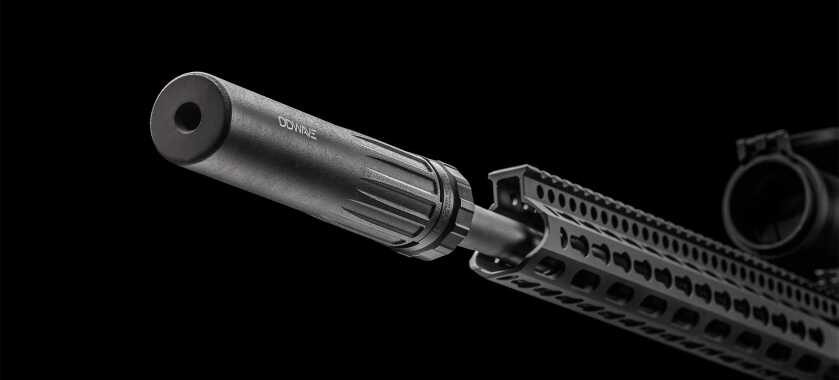Long-time industry leader Daniel Defense is now making commercially produced 3D-printed suppressors. By using 3D printing, the company can produce suppressors impossible to machine.
Called the DD Wave, Daniel Defense’s new suppressor is in production both in quick-detatch and direct-thread version. The Wave is rated for .223 Remington/5.56 NATO, .308 Winchester/7.62 NATO and any other cartridge all the way up to .300 Winchester Magnum.
The DD Wave is not the world’s first 3D-printed suppressor. Other companies have 3D-printed cans privately and commercially, using materials from plastic to titanium. What makes the Wave stand out is it’s monolithic Inconel construction.
One major benefit of 3D printing is that it allows builders to use unconventional materials. The Wave core is an enclosed Inconel baffle stack made using the selective laser sintering process.
Inconel is very strong and very hard, suitable for high pressure and temperature applications. Unfortunately it also work-hardens quickly, making it difficult to machine using conventional cutting tools. The 3D printing process gets around this problem by building the part layer by layer.
The mounting components are constructed with 17-4 PH stainless steel and titanium. For added protection the whole thing gets a Cerakote finish. All DD Wave suppressors can be used with full-auto guns.
“The DD WAVE is unique because it’s constructed entirely using 3D direct metal laser sintering technology,” said Daniel Defense President and CEO Marty Daniel. “We are able to do things with this type of manufacturing that you simply can’t with a conventional machine.
“The one-piece design, constructed from Inconel, eliminates the need for welds, which are usually the weakest parts of a suppressor,” he added. “So what you’re left with is a suppressor of unmatched strength and durability.”

See Also: RAMBO: 3D-Printed 40mm Grenade Launcher Fires 3D-Printed Ammo
Performance varies depending on cartridge, load and caliber. Daniel Defense states that the DD Wave typically reduces 5.56 by about 30 decibels and 300 AAC Blackout by as much as 40 decibels.
The quick-detach model has a $1,157 MSRP and the direct-thread model runs just under a grand at $986. Real-world prices are expected to be a bit less. Both models are available with 1/2-28 and 5/8-24 mounting options.
Hobbyists and manufacturers alike are turning to 3D printing for gun components. A few years ago the West Fork Armory showed off their disposable 3D-printed plastic suppressors. Norway’s Tronrud Engineering stepped up the game with their TE-Titan, a titanium and Inconel 3D-printed suppressor.
With these developments, it’s clear that 3D printing aka additive manufacturing isn’t just for prototyping, but it can also produce parts that conventional manufacturing can’t.

Let me see. $1100.00 suppressor or $1.00-$100.00 ear protection. For most of us the tax stamp needs to go and competition needs to take over to make this a reality. Just too rich for my blood. Can anyone really justify the suppressor costing as much as the rifle it is attached to?
Nice Promotional video. Suppressor looks great BUT like all of the suppressor videos- they always play music over the actual shooting. I would like to hear the difference with it on and off. Sell me some of the benefits.
Now if we can get rid of the $200 tax stamp and nearly year-long wait for approval…we can sell more and the Price can come down.
Sounds awesome…now if we can get rid of the $200 tax stamp and nearly year-long wait for approval…
HERE HERE